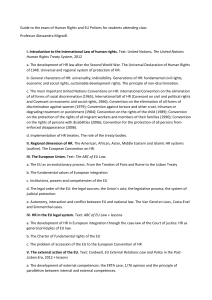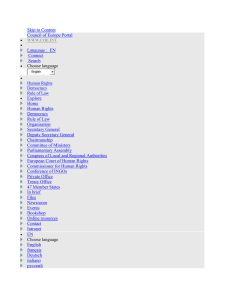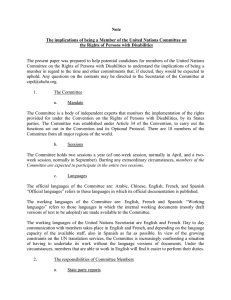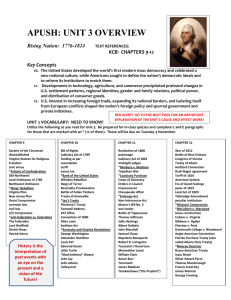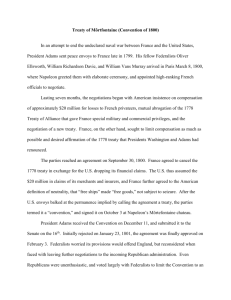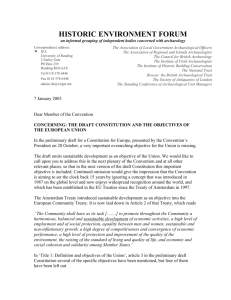Introduction to the United Nations Human Rights System
advertisement
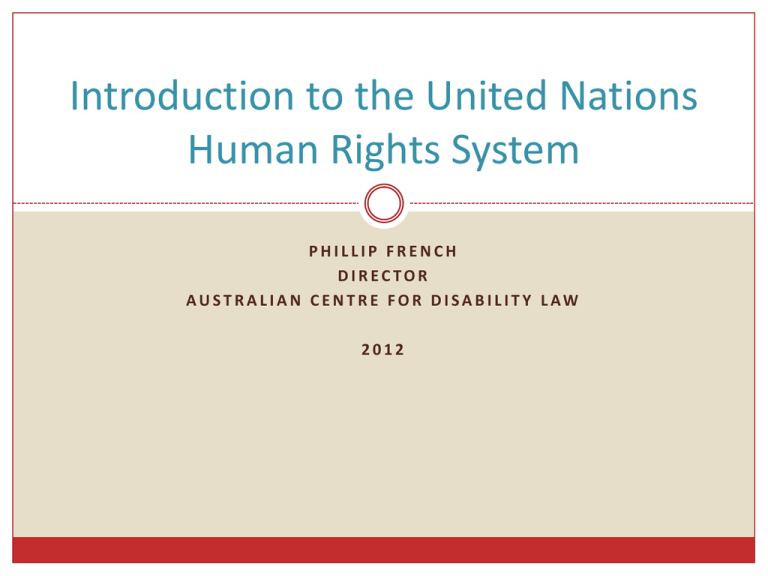
Introduction to the United Nations Human Rights System PHILLIP FRENCH DIRECTOR AUSTRA LIA N CEN TRE FOR DISA B ILITY LAW 2012 Session overview Introduction to the United Nations Introduction to human rights Introduction to international human rights law Introduction to the United Nations Formation and purpose Established 1945 under Charter Four broad purposes Maintain international peace and security Develop friendly relations among nations Achieve international co-operation: In solving international problems of an economic, social, cultural or humanitarian character In promoting and encouraging respect for human rights and fundamental freedoms Centre for harmonising the actions of nations to attain these ends Membership 193 members Every internationally recognised sovereign state, except Vatican City Australia – a founding member Introduction to United Nations Principal organs General assembly Security council Economic and Social Council Regional commissions Secretariat Councils Human Rights Council Programmes and Funds United Nations Development Fund Office of the High Commissioner for Refugees Specialised agencies United Nations Educational, Scientific and Cultural Organisation International Monetary Fund World Health Organisation International Court of Justice Introduction to human rights Fundamental values (fundamental law) Normative Universal Inalienable Inherent to the person; can not be given nor taken away (except in accordance with law) Indivisible Belong to every human being, irrespective of nationality, place of residence, gender, national or ethnic origin, colour, religion, language, or any other status All human rights are of equal value and importance Interdependent Human rights cannot be realised in isolation from each other. The improvement of one right facilitates the advancement of others; deprivation of one right adversely affects other rights Introduction to international human rights law Classes of rights Civil and political rights ‘First generation’; ‘Negative rights’; ‘Individual rights’ Immediately attainable – must be fully realised on entry into force Economic social and cultural rights ‘Second generation’; ‘positive rights’; ‘collective rights’ Progressively attainable – (but not aspirational!) Must be pursued to full extent of available resources Obligation to take progressive action is immediate Regressive measures not permissible Implementation measures must be equitably distributed across population with greatest emphasis on most disadvantaged Introduction to international human rights law International Bill of Rights Universal Declaration of Human Rights (1948) International Covenant on Civil and Political Rights (1966) International Covenant on Economic, Social and Cultural Rights (1966) Other ‘core’ human rights instruments International Convention on the Elimination of All Forms of Racial Discrimination (1965) International Convention on the Elimination of All Forms of Discrimination Against Women (1979) Convention Against Torture and Other Cruel, Inhuman or Degrading Treatment or Punishment (1984) Convention on the Rights of the Child (1989) International Convention on the Protection of the Rights of All Migrant Workers and Members of their Families (1990) Convention on the Rights of Persons with Disabilities (2006) International Convention for the Protection of All Persons from Enforced Disappearance (2006) Introduction to international human rights law Hierarchy of international human rights instruments Core treaties Binding upon parties Committee of experts Declarations, Principles, Action Plans non-binding Provide policy guidance Enforcement of international human rights law Persuasive – based upon the solemn commitment of States Parties – the State itself must commit to action to resolve violations (a kind of ‘ethical contract’ between States) Levels of State Party obligation Recognition of the treaty – must enact laws and develop policies and programmes to give effect to human rights Respect treaty rights – must refrain from action that arbitrarily interferes with human rights Protect treaty rights – must prevent non-State actors from arbitrarily interfering with human rights Fulfil treaty rights – must take positive action to ensure that treaty rights are realised in fact Interpreting international human rights law ‘Living tree doctrine’ The text of a treaty is considered organic and it must be interpreted in a broad and progressive manner so as to adapt to contemporary conditions ‘Broad and purposive’ approach The text of a treaty is not to be interpreted narrowly or literally; instead, it is to be interpreted broadly in light of its underlying purpose

